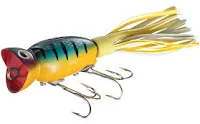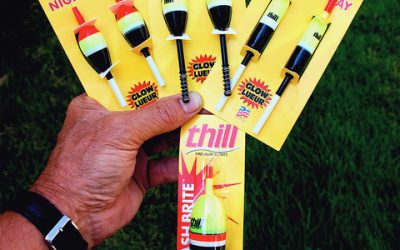Reprinted from the Sioux City Journal
The dog days are here. Walleye fishing, predictably, gets tougher. With air temperatures hitting the high 80s or 90s most days, the water temperature heats up. Weed growth expands, and some lakes experience horrific algae blooms.
All told, I’d much rather fish walleyes in June than in August.
But, that doesn’t mean you can’t make great catches of walleyes during the heat of summer.
Actually the Missouri River reservoirs offer great walleye fishing in the heat.
If you are fishing natural lakes, some of the presentation tricks I’m going to outline here will help you fill that limit. And you can take them to the reservoirs as well.
First, let’s talk bait. Leeches and crawlers are the traditional summertime baits, with minnows topping the list in the spring and chubs in the fall.
Typically, when I’m fishing natural lakes, I’m using some type of live bait rig such as a Lindy Rig or Roach Rig. They are practically the same arrangement, a sinker (typically 3/8-ounce for most of your fishing) stopped by a swivel in front of 36 inches of snell with a hook at the end.
While I do use bottom bouncers in lakes from time to time, especially if I can’t find fish and have to cover a lot of ground, most of the time I find fish on the depth finder and slow my presentation down.
Most of the time the fish are relating to weeds, particularly cabbage and coontail. I prefer to fish cabbage as it is much easier to move your presentation just outside of the weed line which forms when light penetration can no longer support plant life.
I abandon the typical “Lindy” sinker when fishing weeds and instead use a cone-shaped sinker which is often used for bass fishing. This sinker slides though the weeds without fouling on them and can save you a lot of aggravation.
While you can buy snells in a variety of lengths and hook sizes, I tie my own. I generally use 36 inches of 6-pound-test mono and snell a short-shanked, upturned-eye hook on the end. Size four for leeches, size six for crawlers.
During the heat of August, I tend to use night crawlers much more than leeches. Walleyes seem to prefer that too. Once the insect hatches start going off, it seems the crawler will beat the leech most days. If panfish are driving me crazy and stealing all my crawlers, I’ll switch to leeches which are a lot tougher and tend to stay on the hook better.
And here’s one of those “tricks” that might help put walleyes in the boat. Before snelling the hook, I slide on a bead of about 6mm. It could be fluorescent orange, chartreuse, green or white. Some days one works better than the other, so let the fish tell you what they want that particular day.
I think the bead is an attention getter and creates a “hot spot” which walleyes key in on when they strike. I fished a lot of live bait situations where the bead made a tremendous difference on whether you caught fish or not.
I also carry fluorescent orange and chartreuse yarn, the same stuff steelhead anglers use. I usually divide the yarn in half because it is pretty thick and cut off a piece about 3 inches long. Next I attach it to the snell right at the eye of the hook with a simple overhand knot. Then I trim the ends down to about a quarter inch long. It provides a bigger target than a bead, acting almost like a spinner but you can go a lot slower.
Another tip is to pinch off the tail of your crawler, removing about one third of its length. I’m not sure why; some think it puts more scent in the water, but it will definitely make a difference most days.
It’s also the thing to do when you are spinner fishing and don’t have a tandem hook set up.
Something else you might try is to use a “Sudden Death” hook. This is a long-shanked, fine wire hook with a kink in the wire. It causes the nightcrawler to spin in an enticing manner. The undulating crawler is hard for a hungry walleye to pass up.
This rigging reminds me of a way I used to fish six-inch plastic worms before worms with twister tails came on the market. It was a snell with two ball-bearing swivels on one end and on the other an Eagle Claw hook onto which you impaled the plastic crawler so it would have a kink, much like the Sudden Death hook. I read about the method in one of the fishing books at the time. On a slow, steady retrieve, the worm rolled over and over. Bass couldn’t resist it.
If your hook is picking up moss or other gunk, go to a floating rig so the hook doesn’t drag over the bottom. Floating jig heads work well and add a dash of color (hotspot) ahead of the worm.
I don’t use the old Lindy-style, shoe-shaped sinker much any more. I’m down to cone sinkers in the weeds or the Lindy Snagless sinker in the rocks or along drop-offs. This sinker truly is almost snag free and if you do hang up, you can get your rig back most of the time.
One other thing about mid-summer walleye fishing on natural lakes. The best fishing will be early and late in the day. I don’t fish at night anymore, but I’ve caught a lot of walleyes trolling minnows imitating crank baits over the tops of weedbeds, mostly at Lake Okoboji.
There’s no need to put the walleye gear away during the dog days of summer. The fish are still in the lake, and they still can be had with the right presentation at the right time.
More Outdoors ubformation can be found at siouxcityjournal.com/sports/recreation/outdoors/





0 Comments